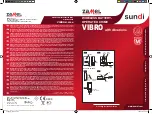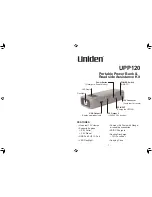
14
4 Mounting
VEGAPULS 61 • Profibus PA
28444-EN-141215
1
Fig. 6: Position of the polarisation plane with VEGAPULS 61 with plastic horn
antenna
1 Marking bars
Make sure that all parts of the instrument coming in direct contact
with the process, especially the sensor element, process seal and
process fitting, are suitable for the existing process conditions, such
as process pressure, process temperature as well as the chemical
properties of the medium.
You can find the specifications in chapter "
Technical data
" and on the
nameplate.
4.2 Mounting preparations, mounting strap
The optionally available mounting strap is used to fasten the radar
sensor over open vessels or flumes. It is suitable for mounting on
walls, ceilings or brackets. The strap is supplied unassembled and
must be screwed to the sensor with the three hexagon socket screws
M5 x 10 and spring washers before setup. Max. torque see chapter
"
Technical data
". Necessary tools: Allen wrench size 4.
Screwing on is possible in two ways. Depending on the selected ver-
sion, the sensors can be swivelled in the strap as follows:
•
Single chamber housing
– 180° infinitely variable
– in three steps 0°, 90° and 180°
•
Double chamber housing
– 90° infinitely variable
– in two steps 0° and 90°
4.3 Mounting instructions
When mounting the sensor, keep a distance of at least 200 mm
(7.874 in) to the vessel wall. If the sensor is installed in the center of
dished or round vessel tops, multiple echoes can arise. These can,
however, be suppressed by an appropriate adjustment (see chapter
"
Setup
").
If you cannot maintain this distance, you should carry out a false
signal storage during setup. This applies particularly if buildup on the
Suitability for the process
conditions
Installation position














































